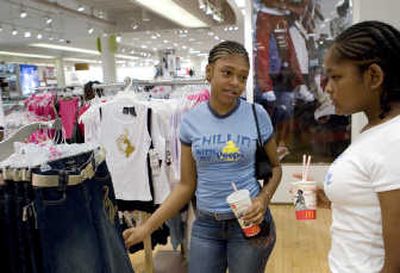Back to school? Not so fast

NEW YORK — The sluggish sales that have dogged the nation’s retailers this year are the result of two quite different sets of problems: Consumers are cautious — they’re paying more for gasoline and watching their home values fall. And, the stores just don’t seem to have the merchandise that people want to buy.
As retailers reported generally disappointing July sales results Thursday, it was clear that the weakening housing market and more expensive gas had shoppers limiting their trips to the mall and, when they did go, buying tentatively, following a pattern that began back in February.
But analysts say stores can’t blame all their problems on macro-economic conditions. Even teen retailers like Pacific Sunwear of California Inc. and Wet Seal Inc., which tend to be least vulnerable to the whims of the economy, had a bad month. That suggests to analysts that stores are not serving up the most exciting products.
“There is a big middle that is treading water, trying to figure out what their consumers are looking for,” said Trish Walker, partner in the retail practice at the consulting firm Accenture.
John Morris, managing director of Wachovia Securities agreed, noting that consumers may not have an urge to go to the mall since “a lot of fall trends are extensions of what worked in the spring and summer.” They include khaki shorts and baby doll tops in heavier fabrics.
Meanwhile, sales of electronics like flat-screen TVs haven’t been suffering.
According to the International Council of Shopping Centers-UBS preliminary tally of 48 stores, July results were up 2.6 percent, compared to the 3.9 percent gain in the year-ago period. The tally is based on same-store sales or sales at stores opened at least year, which are considered a key barometer of a retailer’s health.
The July results were in line with the modest 2.3 percent same-store sales pace so far this fiscal year, which started in February, but is well below the 3.9 percent average in the year-ago period.
Still, the picture this month was made more complicated because of some quirks in the retail calendar. Sales for the first week of August, a key back-to-school week, were reported in this year’s July period, which helped boost July figures but should reduce business for August.
Stores are also blaming another trend: A growing number of schools are starting classes later, delaying back-to-school purchasing. Teens usually wait to do some of their shopping until they see what their friends are wearing. Morris argued, however, that if there was a clear hot fashion trend, “teens wouldn’t need to wait.”